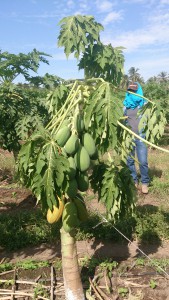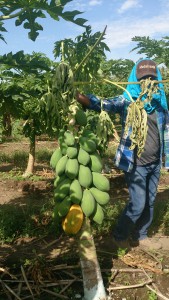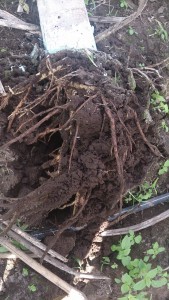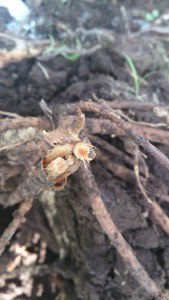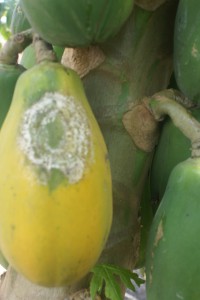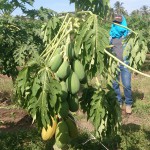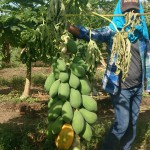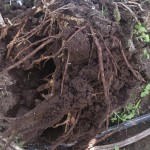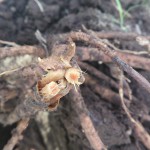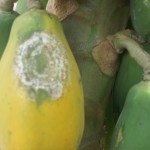Phytophthora Palmivora
Wilt of the Papaya / Phytophthora Palmivora .
Papaya wilt is mainly caused by Phytophthora Palmivora , although other fungi such as Fusarium and Rhizoctonia have also been found in this symptom.
Symptom.
This disease is characterized by the presence of dehydrated stems towards the apex of growth showing wilting of the leaves.
The roots of this plant show a necrotic and watery appearance (rot) that easily becomes bark and the center of the root is also necrotic.
The fruits show abundant sporulation of white color in the pedicel, or on the same fruits especially in the part near the apex.
The favorable conditions for the appearance of the P. palmivora pathogen are, soil temperature of 20 to 23 ° C and ambient temperature of 26 to 32 ° C. Soils with excess moisture, waterlogging or waterlogging and strong winds that spread sporangia. Especially it can occur 2 or 3 days after heavy rains.
- palmivora control.
- Eliminate infected fruits as much as possible and avoid leaving them lying in the field, because the infections will come when there are favorable conditions for the appearance of the pathogen.
- Avoid flooding or waterlogging, for this you must level the ground.
- Raise beds to avoid water contact with the crown of the plant in case of waterlogging.
- If there is presence of the disease causing wilting avoid heavy watering.
Chemical control
Preventive:
- Application of Phosphorous Acid or phosphites of potassium or any other cation, at a dose of 1.0 lt per hectare, especially if the plantation is young and coincides with the time of abundant rainfall.
- Silicon applications can be made 4 times every 15 days at a dose of 1.0 liters per hectare sprinkling the foliage.
Systemic:
The applications of Mefenoxam, Fosetil Al, Mandipropamid have shown good control of the disease, for this purpose it can be applied in stains at the beginning of the disease any of the products indicated at a dose of 1mL per liter of water, and if a higher incidence is observed 5 to 6% should be applied to the entire plot in the drip at the doses indicated on the label.
Note: The local authorization of the products to be used should always be considered.
Copyright © All Rights Reserved.
Semillas del Caribe / One Step Ahead
- Phytophthora 2
- Phytophthora 1
- Phytophthora en raíz
- Phytophthora en raíz
- Phytophthora en fruta
